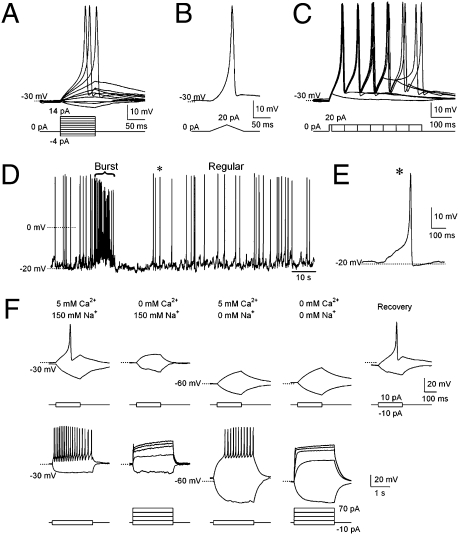Fig. 1.
C. elegans body wall muscles fire all-or-none action potentials. (A−C) Action potentials evoked by current steps from −4 to +14 pA in 2-pA increments (A), ramp currents from 0 to +20 pA (B), and +20 pA currents from 10- to 360-ms duration in 50-ms increments (C). Dotted lines, −30 mV. (D) Spontaneous action potentials exhibit “burst” (brace) and “regular” firing modes. (E) A scaled single spontaneous action potential labeled with asterisk D. (F) Upper traces show that single action potentials were abolished in the absence of Ca2+, Na+, or both. Lower traces show that, with increased current injection time and amplitude, trains of action potentials were elicited in normal and 0 Na+ solutions, but were not in 0 Ca2+, or 0 Ca2+ and Na+ solutions.

